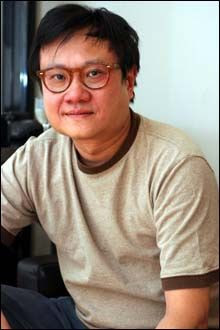Documentaries on Art – 4

REMBRANDT
24th May 2009; 5.45 pm
Ashwin Hospital Auditorium
Call : 97904 57568
http://konangalfilmsociety.blogspot.com/


REMBRANDT
24th May 2009; 5.45 pm
Ashwin Hospital Auditorium
Call : 97904 57568
http://konangalfilmsociety.blogspot.com/

Agatha Bas
Rembrandt Harmenszoon van Rijn, known commonly as Rembrandt, is considered a master of Western Art. With more than 600 paintings and about 2,000 drawings and etchings, (and even more that have been lost as time passed) he is one of the most prolific artists of all time. The variety of the subjects used in his work is amazing when compared to others who specialized in only certain types of painting. Nudes, landscapes, portraits, everyday scenes, birds and animals, historical and mythological figures, biblical subjects, and self-portraits are all to be found in his creations.Rembrandt was born in Leiden, The Netherlands on July 15, 1606, the son of a miller of modest means. His education was not neglected, but the university bored him and he later dropped out to study art. He began with a local teacher and then left to study in Amsterdam where he mastered his lessons in six months. He returned to Leiden and at only 22 was already taking on students.
 The Nightwatch
The NightwatchUnfortunately, however, his private life was not so successful. Of his and Saskia's four children, only one survived infancy and Saskia herself died in 1642. He was forced to declare bankruptcy in 1656 after his ostentatious lifestyle exceeded even the substantial funds he was making as a painter, teacher, and art dealer. He was forced to auction off his treasured art collection as well as his house. He began to focus more on painting for his own enjoyment rather than for commission and his paintings from this time are thought to be his best, showing a depth of richness and spirituality missing in the precise brushstrokes of his earlier works.
Hendrickje Stoffels, a housekeeper whom he had hired in 1649, had become his common law wife and Rembrandt used her as a model for several of his paintings. He often called friends and family into his studio to serve as ideals for historical and mythological paintings, disguising them as portrayals of famous characters. Sadness still seemed to follow him, however, when in 1663 his second wife died, followed in 1668 with the death of his only surviving child, Titus. Rembrandt himself lived less than a year afterwards, dying on October 4, 1669.
(Source: Internet)























